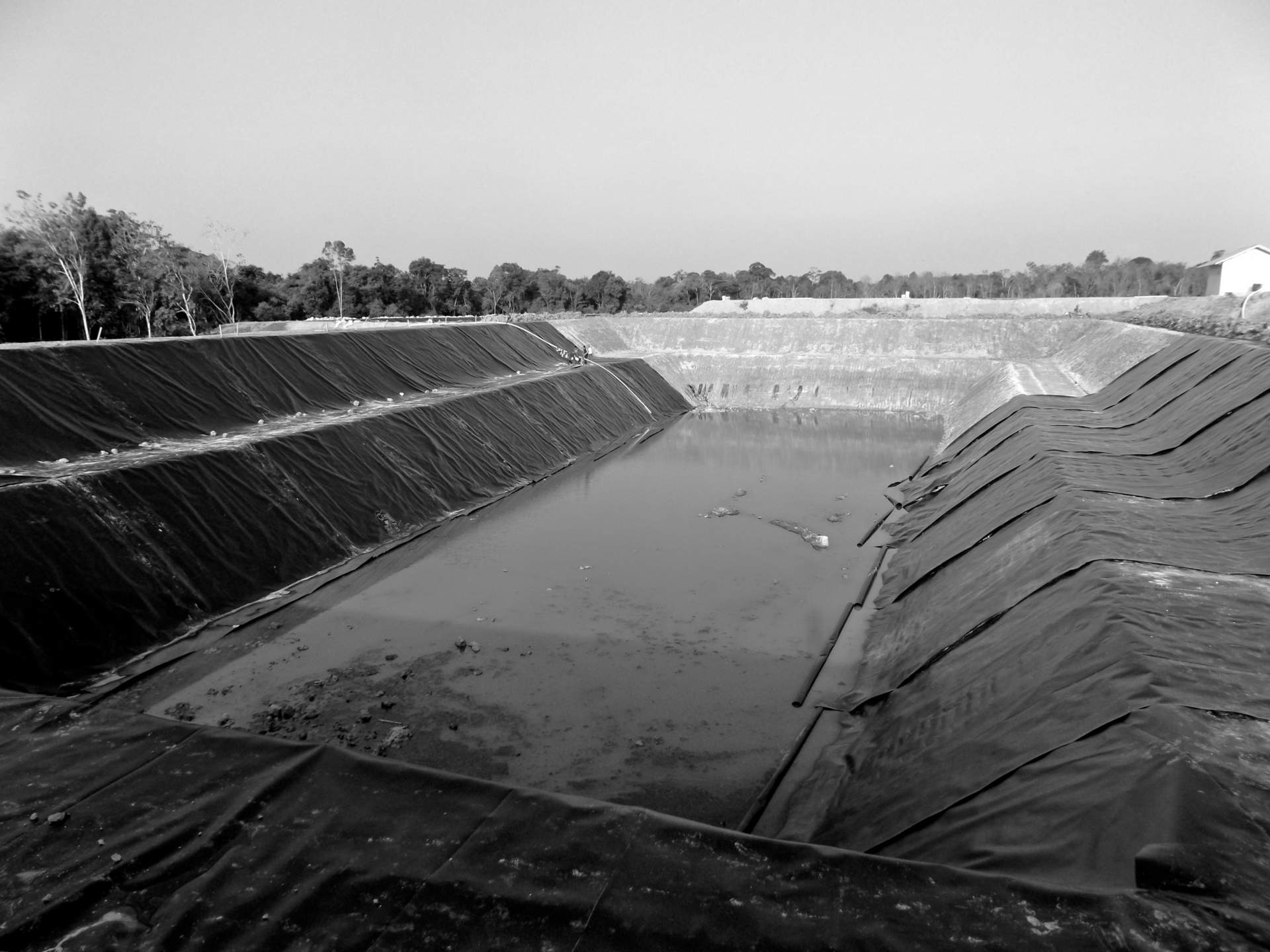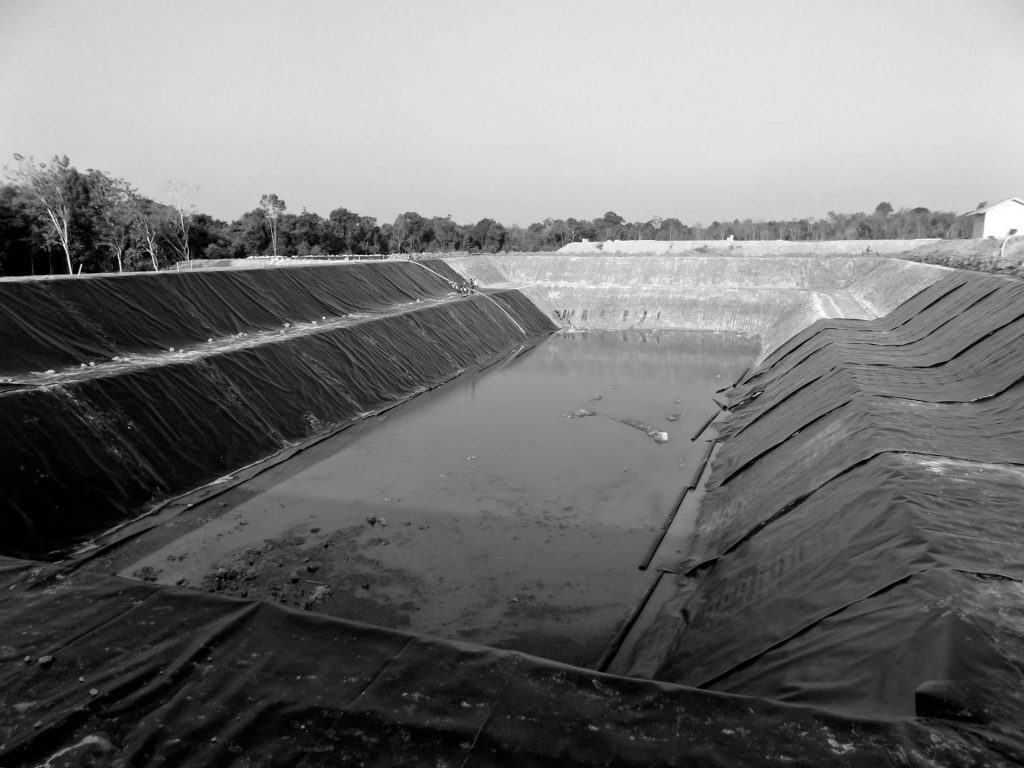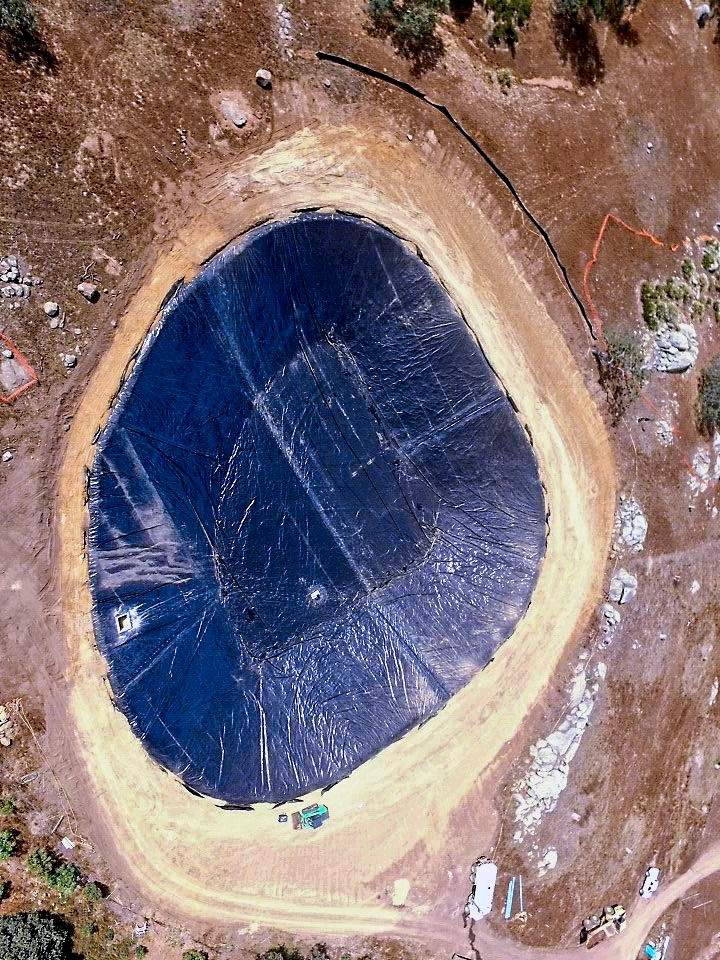Stormwater Retention Pond Liners
Stormwater Retention Ponds are used to collect runoff during periods of heavy rain.


Cities need proper retention ponds because, during periods of storms, their existing stormwater lines may not have the capacity to handle all of the runoff. Inability to handle runoff can lead flooding, sinkhole formation and groundwater contamination.
Parts of the Southwest are especially prone to this issue because they have less frequent, but often more intense periods of rain.
Stormwater retention ponds are often found next to shopping centers or subdivisions. Many cities require developers to add retention ponds because residential and commercial properties have much higher storm runoff rates than natural, undeveloped land. These developments have more concrete and pavement, and that causes much faster runoff that can overload the city stormwater lines.
Runoff from residential, commercial and industrial areas may also contain oil, pesticides, and other pollutants that need to be controlled or treated before they enter the groundwater supply.
While some stormwater basins aren’t much more than a dry pond, others require a geomembrane to line the basin.
A stormwater retention pond requires a geomembrane liner for the following conditions:
- If the surrounding terrain features limestone, dolomite, or other soluble rock types, rapid and excessive stormwater runoff can increase the risk of sinkholes.
- If the runoff contains pollutants that might contaminate groundwater.
- If water seeping from the stormwater pond risks mobilizing existing contaminants in the soil or groundwater.
Western Liner offers geomembrane liners that are ideal for stormwater catch basins. The Aqua series provides reinforced polyethylene (RPE) geomembranes that are perfect for these basins because they are mostly impermeable and prevent water leakage, which allows the stormwater to travel easily to its destination. In addition, the Aqua series of RPE offers a long-term guarantee.
The RPE geomembranes are tough and long-lasting, which makes them perfect for erosion control and water treatment. We manufacture permeable needle punch non-woven geotextilesspecifically for this application. They come in several gauges and can be fabricated in our factory in your needed panel size and shape, saving you time and money during the installation process.

What's the purpose of a retention pond?
The principal purpose is to capture storm water and either hold it or channel it into a water management system. This is both to avoid flooding of impermeable surface, and to channel the water into a management system for usage. Floodwaters typically accumulate debris also, and as the drainage basin for an area, the retention pond is a good place to filter out such debris and pollutants as the churned-up storm water settles. Retention pond liners are specified according to the designed purposes of the retention pond.
Why are retention ponds required in many localities when structures are built?
The modern development footprint typically covers once-permeable ground with impermeable surfaces such as asphalt lots, groomed playing fields, and the like. See our guide to Why Cities Require Retention Ponds. Municipalities increasingly require developments to retain a percentage of permeable surfaces so that rain water will:
- Accrue to the locality, either in the underground water table or the water management system.
- Not run outside of the municipality's water management system.
- Not stand in place and flood the surface, causing damage.
How do water retention ponds work?
Storm water accumulates downhill and becomes unmanageable. The retention pond is large enough to accommodate the sudden surge of water as it drains the surrounding higher slopes. From the pond, the excess water may be manageably channeled into a water management system, including subsequent ponds. Or the water may be left to soak into the ground at a slower pace, to evaporate, or to nurture the wildlife habitats that such ponds frequently become. How to line the bed of the pond will depend on how the water is to be treated. You can calculate the size of liner required for your pond project using our Pond Line Calculator.
What is the difference between detention pond and retention pond?
A retention pond or "wet pond" is designed to hold water continuously, and only partially drains any incoming surge of storm water. A detention pond is designed purely to capture the surging storm water, and to release it to a water management system at a manageable pace, and with storm debris cleaned out, etc - subsequently becoming a "dry pond" until the next storm. A retention pond is a buffer and a repository; a detention pond is principally just a buffer. See how both surge capture and recycling for irrigation come together in one such system with this Sports Field Drainage overview.
Our company maintains factories in Tolleson, AZ, Romulus, NY, and Great Bend, KS, so that we are able to service your needs wherever you are located in the country. For any questions and inquiries call today and one of our cover and liner experts will be happy to assist you.

